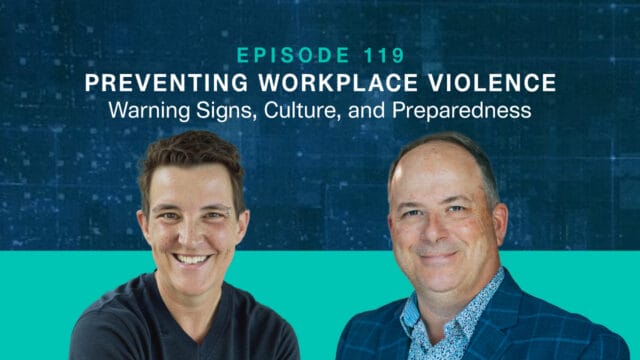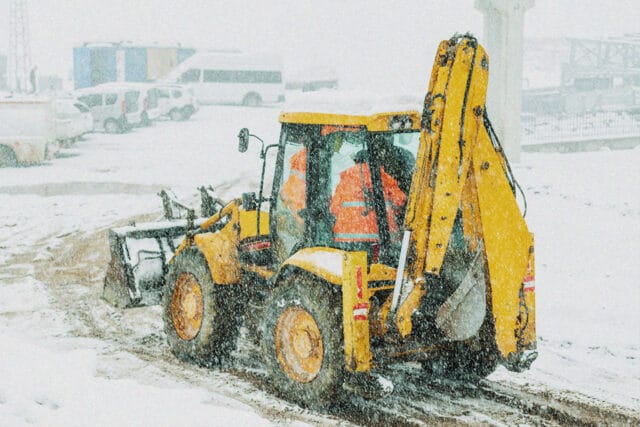
Taking Back Ownership of OQ Programs – The New York White Paper (Part 2)
In February 2019, the Pipeline Safety Section within the New York State Department of Public Service (NYSDPS) published an Operator Qualification White Paper advocating that, in absence of action by PHMSA at the federal level, states should be taking action to require operators to improve their OQ programs. A recent conversation I had with Jason Montoya, who is Pipeline Safety Bureau Chief at the New Mexico Public Regulation Commission and Past Chair of NAPSR, illustrates that the state of New York is not alone in its position. Jason noted, “It is highly encouraged that States be proactive closing gaps within the Operator Qualification Rule due to the unknown completion of pending rulemaking. Some states, including New Mexico, have already begun taking action to address the relaxed OQ regulations at the State level. In my opinion, there is no reason to delay OQ program enhancements which will promote pipeline safety.”
With this sense of urgency in mind, let’s jump back into my discussion of the New York White Paper. Last month, I published Part 1 of my article, which discussed the impetus for this white paper and the key concerns voiced by the NYSDPS about the current state of OQ programs, as well as my thoughts on how operators can successfully partner with a third-party OQ vendor while always maintaining control of their own OQ program. In Part 2, I’m sharing a short overview of the “Model” Plan for OQ that’s been proposed by the NYSDPS and offering some ideas for how technology and other aspects of a third-party OQ vendor’s solution can help support the types of OQ program improvements that would be required by the NYSDPS’s proposed changes.
The definition of a covered task – what’s been proposed by the NYSDPS?
The white paper proposes replacing the current four-part test used to identify covered tasks with a new, two-part test that would result in inclusion of every task that affects the integrity of the pipeline – from its design, through its construction, and into operations and maintenance.
What does the NYSDPS include as key components of its “Model” Plan?
The white paper puts forward an 11-part model process that includes:
1. Knowledge-based Covered Task Training: This training should incorporate operator and facility-specific procedures and equipment, as well as facility-specific abnormal operating conditions (AOCs), and its completion must be documented by the operator. Any knowledge-based training used must always be reviewed by the operator to ensure it meets or exceeds the operator’s OQ plan.
⟶ Notable enhancements to current PHMSA OQ Rule: Formal knowledge-based training is always required and must be documented; operator-specific procedures, equipment, and AOCs (down to the facility level) must be incorporated.
2. Knowledge-Based Evaluation: The knowledge gained in Step 1 above should be evaluated via a written or oral exam that must be clearly documented.
⟶ Notable enhancement to current PHMSA OQ Rule: Operator-specific procedures, equipment, and AOCs must be incorporated into knowledge-based evaluation.
3. On-the-job Covered Task Training: Hands-on training, once again tailored to the operator’s specific procedures and equipment, must be provided (while, of course, complying with span of control (SOC) limits for the task).
⟶ Notable enhancements to current PHMSA OQ Rule: Hands-on training is always required and must be documented; operator-specific procedures, equipment, and AOCs must be incorporated
4. Practical Evaluation: The individual’s skills and abilities must be evaluated through observation of on-the-job performance (within SOC limits) and/or simulation(s), including an evaluation of their ability to recognize and react to AOCs.
⟶ Notable enhancement to current PHMSA OQ Rule: Performance-based evaluation criteria is required (and if not used, the reason why must be documented).
5. Requalification: Requalification intervals must be established (with supporting analysis) for each covered task and the requalification process must mirror the initial qualification process, including the focus on operator-specific procedures and equipment, training requirements, as well as both knowledge and performance-based evaluation.
⟶ Notable enhancement to current PHMSA OQ Rule: Evaluation alone cannot suffice for requalification – training requirements must be met as well.
6. Management of Change (MOC): A documented MOC program must be established that defines what constitutes a significant change, how changes will be communicated, and whether a “stand-down” period (i.e., work stops until requalification occurs) or “transition” period (i.e., there’s a defined grace period during which individuals must complete supplemental training, get requalified, etc.) is required.
⟶ Notable enhancements to current PHMSA OQ Rule: Much more prescriptive, requiring a well-defined, documented MOC program that clearly outlines what’s considered significant change, how qualified individuals will be notified, and the type of action(s) required (i.e., supplemental training, requalification, etc.).
7. Expectations for Operator Employees vs. Contractors: The standard is the same – both groups should be trained, evaluated, and qualified using operator-specific procedures and equipment. When a contractor is hired for specialized work and the equipment/procedures differ from those of the operator, this must be reviewed and documented by the operator.
⟶ Notable enhancement to current PHMSA OQ Rule: Equivalency between employee and contractor training and evaluation processes is required.
8. Recordkeeping: Qualification records, including who evaluated the individual and the evaluation methods used, must be maintained. In addition, all individuals working under SOC must be documented.
⟶ Notable enhancements to current PHMSA OQ Rule: More detail must be tracked relative to each qualification record; must track all individuals working under SOC.
9. Emergency Response: With regard to emergency response scenarios, individuals intending to perform (or direct and observe) covered tasks must either be qualified under the operator’s OQ program, or, if qualified under a third-party OQ program, the operator must review the associated task criteria against its own OQ plan to ensure alignment and document this review. SOC must always be maintained during emergency response.
⟶ Notable enhancement to current PHMSA OQ Rule: Qualification of response personnel performing covered tasks is required (whereas the current rule provides more flexibility for emergency responders to pitch in, even if they aren’t qualified).
10. Verification of Qualifications: An individual’s covered task qualification records (including the expiration date of each) must be readily accessible and easily verified at any time. In addition, before accepting a contractor’s qualifications, an operator must review the associated task criteria against its own OQ plan to ensure alignment and document this review.
⟶ Notable enhancement to current PHMSA OQ Rule: While today’s requirements call for a review of any third-party qualifications accepted by the operator, that review would now need to be part of OQ recordkeeping.
11. Engineering Tasks: New engineering tasks related to the development, design, and modification of the pipeline system must be incorporated into the operator’s OQ program and the individuals performing these tasks must be qualified under the OQ process.
⟶ Notable enhancement to current PHMSA OQ Rule: These types of engineering tasks would now be considered covered, necessitating OQ qualification of engineering staff.
Are there other required OQ best practices put forward in the white paper?
Yes. Appendix B of the white paper provides very specific best practice recommendations for implementation of the “Model” Plan. These detailed recommendations span the areas of general qualification requirements, training requirements and documentation, written and practical evaluation requirements and documentation, and requirements for a written process to measure and regularly review program effectiveness. The NYSDPS has recommended that each NY operator be required to either incorporate these practices into their own OQ program, or document the reason(s) why a particular practice is not applicable to their pipeline system.
If New York and other states begin adopting recommendations like those in the “Model” Plan, what should you look for from a third-party OQ vendor to help meet these requirements? How can technology help?
The key thing you’ll want to confirm is whether an OQ vendor’s software can support covered task qualification criteria, evaluation procedures, and real-time qualification verification that incorporate requirements related to formal training and operator-specific procedures/equipment. For example:
- Training as a Co-Requisite – Can required training be tied to relevant tasks in the vendor’s software as a co-requisite to evaluation? Can the system track records of training completion (computer-based, on-the-job, and/or instructor-led)? Can the system host and deliver operator-specific computer-based training courses?
- Operator-Specific Procedures as a Co-Requisite – Can your company’s procedures be tied to relevant tasks in the vendor’s software as a co-requisite to evaluation? Does the vendor’s system enable web-based access to your unique task procedures? Can the system track procedure acknowledgements and/or completion of procedure testing?
- Field Verification – Before an individual goes to work, does the OQ vendor provide the ability to verify an individual’s task qualification(s), including the completion of any required task training and/or operator-specific procedures acknowledgement or training? Is this verification tracked and reportable in the vendor’s system for audit purposes?
Are there important considerations beyond an OQ vendor’s software capabilities?
- Covered Task Criteria: If the vendor offers a list of covered tasks that an operator can adopt for their own OQ plan, what’s the process to map tasks to the operator’s OQ plan and identify any gaps? How is this process documented? Do evaluations for all “hands-on” tasks on the vendor’s task list include both knowledge-based and skill-based criteria? How were Span of Control and requalification intervals determined for each task and what documentation exists to support these decisions? Is the use of operator-specific tasks supported, as needed?
- Evaluator Program: Does the vendor have clearly-established evaluator selection criteria and what’s included? How is the evaluator selection process documented (e.g., is an application completed?)? Is formal evaluator training required and how often? Is evaluator performance monitored on an ongoing basis (e.g., through quality assurance checks of evaluation paperwork and field audits)?
- Program Effectiveness: Does the OQ vendor have well-established processes for conducting quality assurance (QA) checks/audits on qualified individuals and evaluators? How are any deficiencies found during audits handled and documented? Are the results of these audits available to you through the vendor’s software?
As discussed in Part 1 of my article, Veriforce offers an OQ solution that enables operators to maintain control over their OQ program – this includes software and services capabilities that enable you to incorporate formal training and operator-specific procedures into your OQ program requirements. You can learn more about our highly-defensible OQ compliance solution here or schedule a custom product demonstration.




